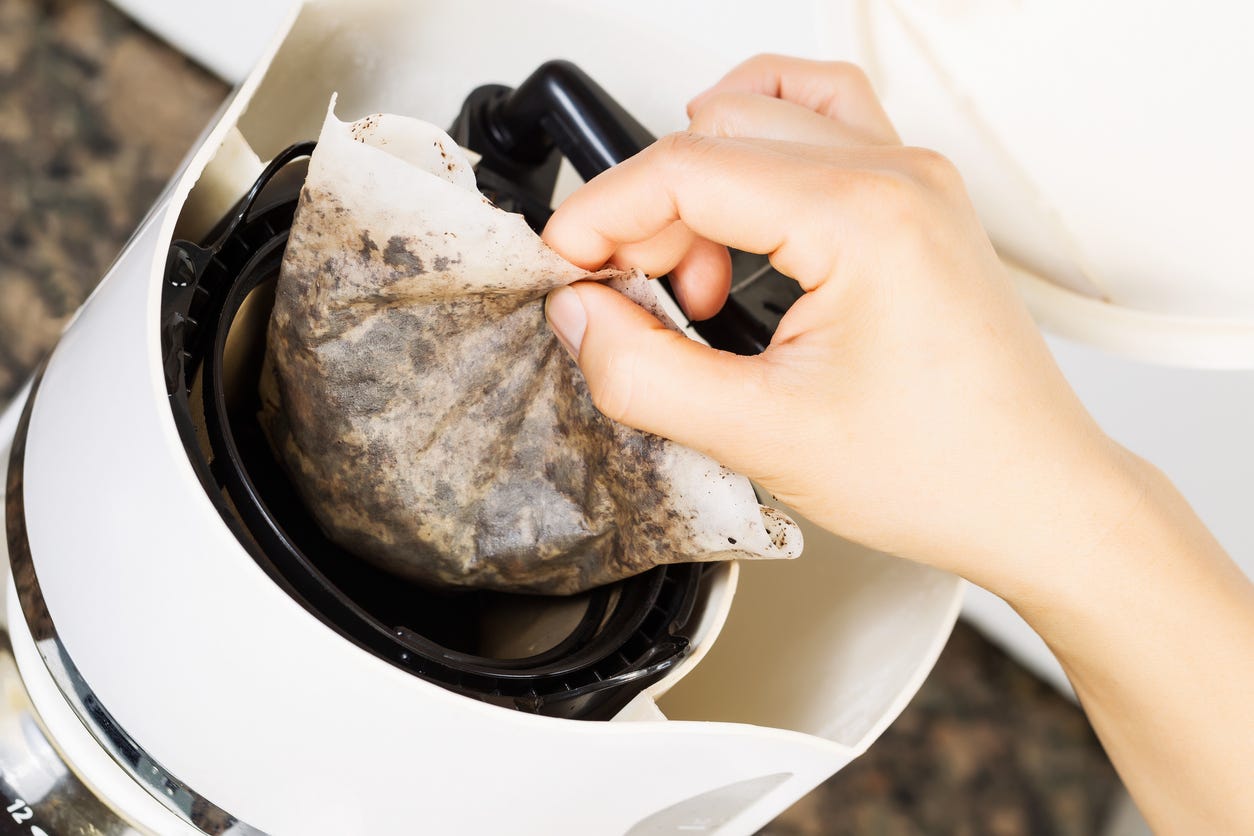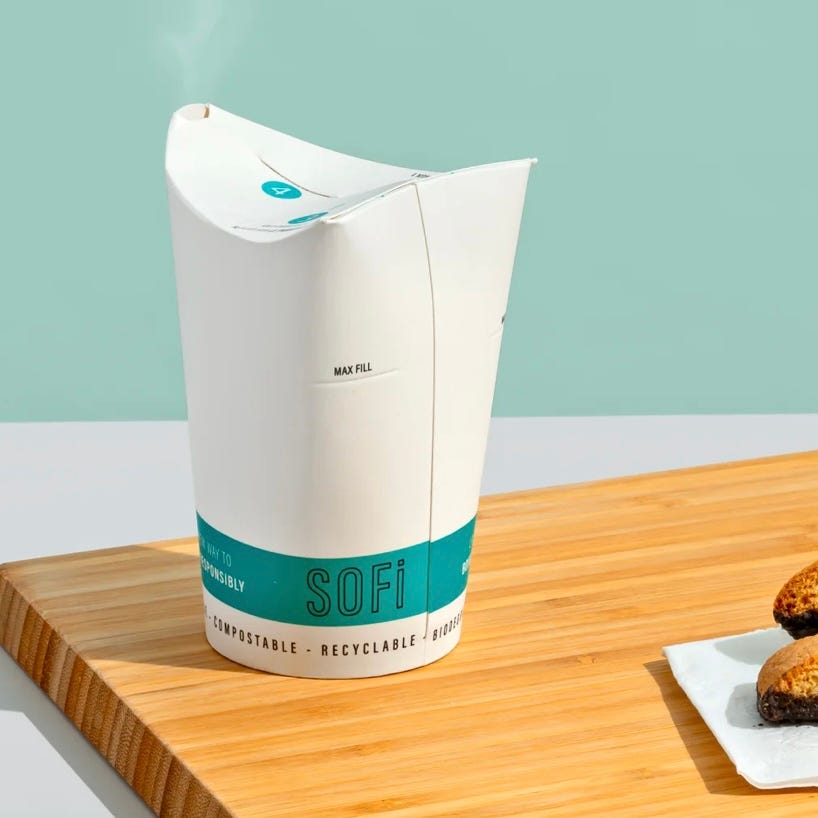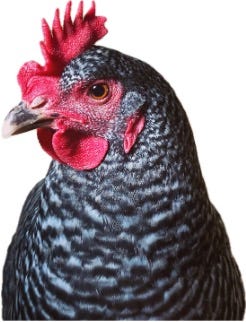What’s at stake
Coffee is the second-most consumed beverage in the U.S. after water (we use about 1.74 million tons of coffee annually). Coffee is “too big to fail” at addressing its environmental and climate aftermath. When we think about climate change and coffee, we usually focus on threats to coffee production. But what about coffee’s contribution to climate change and pollution?
When dumped, spent grounds from coffee shops, offices, and homes emit epic amounts of methane, a powerful greenhouse gas. And 40 million plastic pods arrive in landfills each day, leaching chemicals and microplastics into the environment.
If food waste were a country, it would be the third-largest emitting country in the world. In the U.S. alone, food waste emits greenhouse gases equivalent to 42 coal-burning plants. Coffee is just part of that problem, but 3% of all food waste is more than a blip.
Fortunately, the coffee industry and its partners are developing innovations to reduce coffee’s post-consumer impact. Consumers can help by making sustainable choices.
Coffee shops and commercial composting
Coffee is ideal for composting. According to Project Drawdown, composting food waste reduces methane emissions by about 50% compared with putting it in a landfill. Compost is a great natural fertilizer, especially when enriched with the nitrogen in coffee. Even better, composting reduces greenhouse gas emissions by up to 84% compared with throwing food waste into landfills.
The key to getting coffee shops to compost is to make the process easy and clean.
In the southern U.S. and Ohio, a B-Corp called Compost Now seems to have solved this equation. “Our mission is to rebuild our depleted soils by composting,” says Kat Nigro, the chief operating officer for Compost Now. The company serves as an intermediary, helping households and businesses compost “by making it really easy.” Compost Now does the dirty work, providing coffee shops with a 35-gallon roll cart bin that the company swaps out weekly for a clean one. The company accepts hard-to-compost materials like bioplastics to make composting even more convenient.
About 40% of Compost Now’s customers are coffee shops. “Cafes and coffee shops are wonderful to work with because those coffee grounds make excellent compost,” says Nigro. Compost Now shares about 25% of its finished compost with organizations in its service area that grow food for the community, helping to fight food insecurity.
Better choices in coffee shop service items
Encouragingly, Nigro says that coffee shops are “moving to compostable to-go cups, whether it’s cold cups or hot cups.”
For example, an Atlanta-based B-Corp, Better Earth, produces compostable food service products that are not only compostable but upcycled. “We use rapidly renewable resources and agricultural waste, so substrates like bamboo and sugar cane,” says Blair Michel, the circularity coordinator for Better Earth. After the sugar is extracted, sugar cane is “typically incinerated or landfilled, whereas we’re able to turn it into plant-based packaging,” she says. Better Earth also uses cover grasses from farms to make its products.
But starting with upcycled materials is just part of the equation. Better Earth is determined to help get its products into compost bins. “When we can get them composted, they’re reaching their full potential. They turn into a nutrient-rich soil amendment that goes back to farms to grow more food, more plants, to make packaging, and we’re closing that loop,” says Michel.
To reduce landfill waste, it must be convenient to dispose of it. Unlike recyclables, compostable cups, plates, and straws don’t have to be rinsed, sorted, and separated. “Food residuals on that compostable packaging can all be tossed right into the same bin. It takes a lot of research and guesswork out of it on the consumer end,” says Michel.
A company called SoFi recently released the first fully recyclable paper hot cup without a plastic lid. Its top folds shut over your drink, leaving a built-in drinking spout. SoFi’s products have been picked up by several hotels, retailers, and coffee shops. This could help reduce plastic waste from coffee to-go cups.
Challenges in commercial composting
Nigro says the composting industry faces two major challenges. One is a lack of commercial-scale composting facilities. Cities like Austin, Texas, that have set a zero-waste goal will have difficulty reaching that goal without local facilities. “That is a major pain point,” she says.
Another pain point is contamination. This is often caused by greenwashing, leading consumers to attempt to compost non-compostable items. “I picked up a Styrofoam cup on the side of the road, and it said ‘biodegradable,’” says Nigro, shaking her head. “There are other products that just say ‘green,’ or they say ‘compostable,’ but there’s no certification to back up that claim.”
Compost Now relies on BPI certification, which verifies that a product is 100% compostable in a commercial setting. It doesn’t just look at whether an item is biodegradable but also whether it contains toxins that could contaminate local soil and water. This is particularly important with so-called ‘bioplastics,’ which are often less green than they sound.
There are other forms of contamination in compost bins as well; this keeps nearly 100 employees busy at Compost Now. “They look through every single cart, bin, or container we collect and pick out as much contamination as possible,” says Nigro. “The most problematic contaminants are those small things we cannot pick out, things like staples you see on tea bags, right? Another thing is produce stickers, the bane of our existence. Another one is condiment packets, the to-go packets. Those are really heavy contamination items.”
How does commercial composting work?
Compost Now, like many commercial composters, uses an aerobic system called windrow composting. “It has those beautiful aerobic microbes that yield high-quality compost,” says Nigro. The company piles food waste into massive piles about eight feet wide and 14 feet tall. They use a machine to turn the pile, aerating the waste.
A key benefit of aerobic composting is that it doesn’t stink, unlike anaerobic composting. Aerobic microbes give off less methane and more heat, which kills bacteria, insect larvae, and any seeds that might have entered the pile. This means almost no flies or odors, and the finished product is perfect for fertilizing gardens and farms.
Home-use coffee pods
What about those 40 million plastic pods being discarded every day? Fortunately, says Nigro, there has been a huge amount of progress in developing truly compostable products for the food service industry recently. “There are BPA-certified coffee pods on the market now. Nine years ago, there weren’t,” she says.
Several companies now make pods for home espresso machines from biodegradable plant-based materials or from aluminum. Aluminum does a better job of keeping the coffee fresh, but it must be recycled, rather than composted, which requires separating the coffee from the pods.
Nespresso consumers can obtain postage-paid bags in which to return their spent pods, and the company does the separation for them. Who wants to pull the foil top off the pod and muck out the wet grounds, after all?
Consumer composting
What if you don’t use coffee pods? Many households use filter-based coffee makers, and those don’t come with handy postage-paid bags. And according to the EPA, U.S. households compost just 6% of their food scraps.
Consumers who don’t want to compost at home and don’t have curbside pickup can now identify the closest food waste drop-off location using a free database developed by Better Earth. https://becompostable.com/sustainability/compostables-drop-off/
“The database was developed to connect consumers with their local compost drop-off locations,” says Michel. The project started with the EPA’s 2018 composter database, updating the information with a state-by-state search for new facilities, haulers, and drop-off locations. Better Earth called organizations to verify whether they were still in operation, combed through websites, and searched social media, gathering over 1,000 data points.
“It was a year-long effort to gather the data and create the mapping tools,” says Michel.
Michel explains that the database showcases the “incredible growth” in the composting industry recently. “We’ve had the most growth in composting infrastructure in the last five years,” she says. It also shows the gaps, as many areas still lack composting facilities.
People without a local composting facility can produce their own compost. Home systems include rotating bins that aerate the compost and stacking systems that rely on earthworms to break down the food waste. Some recently introduced indoor systems even dry and grind up food waste to reduce bulk and odor. For people with gardens, home composting can produce excellent results.
Composting on the coffee farm
Bellwether Coffee, a U.S. company that produces electric coffee roasters, supports a program in Peru that helps coffee farmers compost coffee waste on-site. Two brothers who run a farm called Churupampa produce compost with coffee byproducts and distribute it to other producers in their area.
Grayson Caldwell, Bellwether's senior sustainability manager, says that wars have driven up fertilizer prices. Making compost costs half what buying the equivalent amount of fertilizer would cost. Bellwether helped the producers invest in machinery that allowed them to compost at a large scale.
“In the roaster, there’s a water reservoir and a chaff can. We encourage our customers to compost used grounds and the chaff that comes from roasting coffee,” says Caldwell. She describes chaff as a “silver skin” that comes off coffee beans as they are roasted.
Curbing food waste
For all of composting’s benefits, it still implies wasted food. “I see composting as a failure, an oopsie, a mistake,” says Teralyn Pilgrim, author of the forthcoming book, No Scrap Left Behind: My Life Without Food Waste. “I feel like it’s a crutch for people.”
She says it's better to prevent food waste by changing shopping and cooking habits, reusing leftovers, and donating unwanted or unneeded foods. Pilgrim has approached zero waste in her household by following several practical steps she lays out in her book. There’s little she can’t upcycle into a casserole, a soup, or a tasty snack.
Like others quoted in this story, Pilgrim has noticed an uptick in recent years in consumer interest in preventing food waste. Between 2017 and 2023, she found an “explosion of interest” online, especially on social media. “People are talking about it, and there's all these tips, tricks, and advice out there.”
Although used coffee grounds are less reusable than other food scraps, you can actually cook with them. Coffee grounds are great in meat rubs for grilling. They can also be used in chili, cocktails, and some desserts. But the supply of coffee grounds far outweighs the demand in most households.
Pilgrim acknowledges that she does compost some items, like banana peels and coffee grounds, that can’t be easily upcycled in her kitchen. “My favorite method is just having a bin you have to turn with a shovel. You’re interacting with the dirt. Just putting a lid on it and spinning it, you’re missing out on a lot of the magic, really,” she says. “And you can analyze your dirt better—I need to add more fluid, or I need to add more leaves.”
Another solution for food waste? Although it won’t help with coffee grounds, Pilgrim notes that backyard chickens are among the simplest ways to upcycle food scraps.
Whether we compost our coffee enthusiastically or reluctantly, it’s clear that composting is a better choice than dumping it in a landfill.






